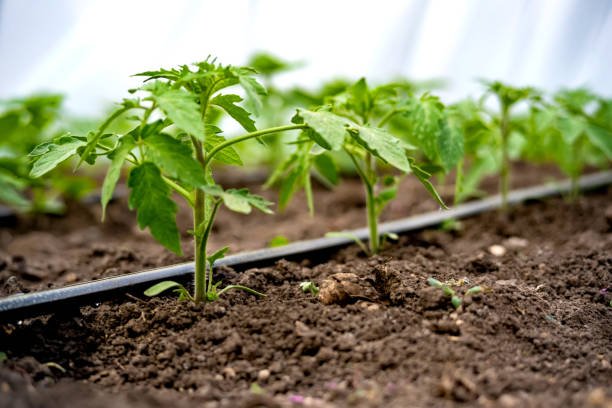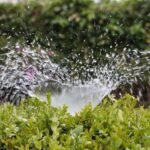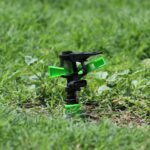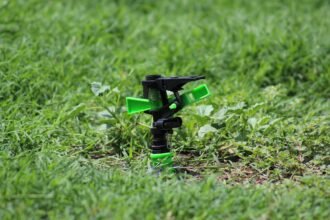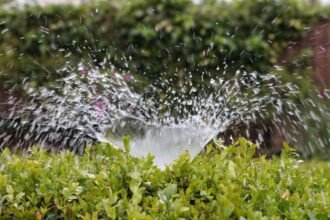Drip irrigation is widely regarded as the most efficient and effective way to water plants, especially in areas with limited water resources. Unlike traditional watering methods, drip irrigation delivers water directly to the plant roots, minimizing waste and ensuring that each plant gets the right amount of hydration. This guide will explore the benefits of drip irrigation, how to install it, and why it’s the best choice for conserving water and delivering nutrients to your plants.
1. 🌱 What is Drip Irrigation?
Drip irrigation is a method of watering plants in which water is delivered slowly and directly to the plant’s root zone through a system of tubes, hoses, emitters, and valves. This approach ensures that water reaches the plants where it’s needed most, reducing evaporation, runoff, and water waste.
The system uses low pressure and works by applying water in small, controlled amounts to the soil near the plant roots, allowing it to soak in gradually and deeply. This contrasts with overhead sprinklers or surface watering methods that apply water to the leaves and surrounding soil, often leading to water loss through evaporation or runoff.
2. 💧 Benefits of Drip Irrigation
Drip irrigation offers numerous advantages that make it an ideal choice for both home gardeners and large-scale farms.
🌿 a. Water Conservation
- Efficient Water Use: Drip irrigation is incredibly efficient because it delivers water directly to the root zone, minimizing evaporation and runoff. This ensures that less water is wasted, making it an excellent solution in regions with water scarcity.
- Reduces Watering Frequency: Since the water is absorbed deeply into the soil, it encourages roots to grow deeper, reducing the need for frequent watering and helping plants withstand drought conditions.
🌸 b. Targeted Delivery of Water and Nutrients
- Water at the Root Zone: Drip irrigation applies water exactly where plants need it, near their roots, reducing the risk of fungal diseases that can occur when water is sprayed onto plant leaves.
- Fertilizer Application: Drip irrigation systems can be integrated with a fertilizer injection system (also known as fertigation), allowing you to deliver nutrients directly to the plant roots, promoting healthier growth.
🌾 c. Reduces Weed Growth
- Minimized Soil Wetting: Since water is applied directly to the soil around the plants, surrounding areas remain dry, reducing weed germination and growth. This results in less competition for nutrients and water.
⏳ d. Saves Time and Labor
- Automated System: Drip irrigation systems can be connected to timers or smart controllers, allowing for automatic watering, saving you time and reducing the labor involved in manual watering.
- Less Maintenance: Once installed, a drip irrigation system requires minimal maintenance compared to traditional watering methods.
🌍 e. Prevents Soil Erosion
- Gentle Watering: Drip irrigation applies water gently, which reduces soil erosion that can occur when large amounts of water are applied quickly by sprinklers or flood irrigation.
3. 🌿 How Drip Irrigation Conserves Water
One of the most significant advantages of drip irrigation is its ability to conserve water while still keeping your plants healthy. Here’s how it works:
💦 a. Direct Application
- Water is applied directly to the root zone, where it’s needed most, rather than being sprayed onto leaves or areas that don’t need watering. This minimizes water wastage.
🌱 b. Slow, Steady Flow
- Drip systems deliver water slowly, allowing it to be absorbed by the soil. This reduces runoff, which can wash away water and nutrients, and ensures deep root watering.
🌞 c. Reduced Evaporation
- Traditional watering methods, such as sprinklers, lose a significant amount of water to evaporation, especially in hot climates. Drip irrigation minimizes evaporation by delivering water directly to the soil.
💧 d. Customizable Watering
- Drip systems allow for customized watering schedules and amounts for each plant or garden area, ensuring that each plant receives the optimal amount of water without waste.
4. 🔧 How to Install a Drip Irrigation System
Installing a drip irrigation system may seem complex, but it’s relatively straightforward and can be done by most DIY gardeners. Here are the basic steps:
📏 a. Plan Your System
- Measure Your Garden: Start by measuring your garden area to determine the length and number of drip lines you will need.
- Identify Plant Zones: Group your plants based on their water needs. Some plants may require more water than others, so it’s important to plan the system accordingly.
🛠️ b. Gather the Necessary Materials
- Main Line Tubing: This is the primary hose that delivers water to the emitters.
- Emitter Tubing: This connects to the main line and delivers water to each plant.
- Emitters/Drippers: These small devices control the flow of water to each plant. They come in various flow rates depending on the plant’s water requirements.
- Filters: Install a filter to prevent debris from clogging the system.
- Pressure Regulators: Drip irrigation systems work best with low water pressure, so a pressure regulator ensures consistent flow.
🔧 c. Layout and Installation
- Connect the Main Line: Start by connecting the main tubing to your water source. This could be a hose bib, a garden faucet, or even a rain barrel.
- Install Emitters and Tubing: Lay the emitter tubing throughout your garden and attach the emitters where each plant will be watered. Use stakes or anchors to keep the tubing in place.
- Test the System: Before burying the tubing or covering it with mulch, test the system to ensure that the water is flowing properly to each emitter.
⏰ d. Set Up a Timer or Controller
- Timer: Attach a timer to your water source to automate watering schedules. Timers can be set to water early in the morning or late in the evening, helping to reduce evaporation.
- Smart Controllers: More advanced systems use smart controllers that adjust watering schedules based on weather conditions, soil moisture levels, and plant needs.
5. 🛠️ Maintenance Tips for Drip Irrigation Systems
To ensure your drip irrigation system continues to work efficiently, regular maintenance is required.
🔄 a. Check for Clogs
- Emitters can become clogged with dirt, algae, or minerals. Regularly inspect and clean your emitters, especially if the water has high mineral content.
- Use a filter at the water source to prevent debris from entering the system.
🔎 b. Inspect the Tubing
- Check for leaks or cracks in the tubing, which can lead to water wastage. Replace any damaged sections immediately.
💧 c. Flush the System
- Periodically flush the system to remove any accumulated debris. This is especially important if you’re using well water or if your system has been idle for a while.
🧭 d. Adjust for Seasonal Changes
- In the hotter months, you may need to increase the watering frequency, while in cooler months, you can reduce it. Adjust your timer or controller accordingly.
6. 🌍 Conclusion: Why Drip Irrigation is the Best Choice for Your Garden
Drip irrigation is one of the most efficient and sustainable ways to water your plants. It saves water, reduces the spread of diseases, and ensures that each plant receives the right amount of water directly at its root zone. By setting up a drip irrigation system, you can conserve water, improve plant health, and make gardening easier and more efficient. Whether you’re growing vegetables, flowers, or fruit trees, drip irrigation is a smart choice for any garden. 🌱 Happy gardening!

